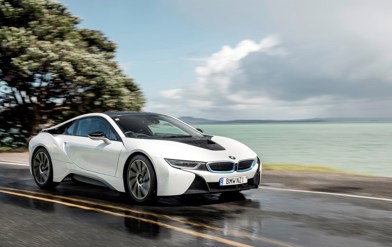With luxury vehicles, delight is in the detail, which is why I’ve always found the Lexus RX a bit disappointing.
But in these challenging times, the great thing is that you can discover how Lexus has addressed much of that disappointment without actually driving it anywhere. You can’t really at the moment anyway, right?
I’ve always loved the RX’s slightly loopy exterior styling, extreme levels of refinement and the opportunity to specify some pretty idiosyncratic interior touches. A bamboo steering wheel? I’m in.
But there’s always been one small thing that has stopped me short of properly engaging with this and so many other Lexus models: the Remote Touch Interface (RTI), which comes in the form of either a touchpad or joystick thingy, depending on model.
The RTI has traditionally been the main method of navigating the Lexus infotainment screen and it’s always been quite . . . challenging to use. It’s not really linear; regardless of which piece of control hardware is installed, the cursor kind of just skips from screen item to screen item, which means you navigate with a series of finger “flicks”.
It seems less than intuitive in an age where we’re all used to mouse, trackpad and smartphone interfaces that replicate the movement of your fingers precisely.
You can adjust the sensitivity and yes, you do get used to it over time; but overall it’s never really worked for me.
Or, I suspect, a lot of people.
Carmakers seldom admit they’ve made a mistake after bold decisions of this nature (BMW’s early iDrive springs to mind); however, the latest RX range features one small but significant change that suggests the company might have seen the error of its ways.
The new RX is the first Lexus to feature phone projection—Apple CarPlay and Android Auto, in other words. Which is great, although the praise must be tempered with the knowledge that Toyota’s luxury brand has lagged behind its premium rivals in this area for a while now.
But top marks for a well-considered execution. Lexus could just have added phone projection to its operating system and moved on; CarPlay and Android Auto menus would be perfectly compatible with RTI.
But the company has also taken the opportunity to quietly add touch functionality to the large 12.3-inch centre console screen, sneaking said screen 140mm closer to the business end of the dashboard. You know, so you can actually touch it.
That’s a great result for the RTI sceptic. The RX still has its touchpad behind the gearlever, but you don’t have to use it thanks to the new screen.
As an aside, Lexus/Toyota still does that annoying thing of locking out lots of infotainment functionality when the car is moving, but phone projection gets around that issue as well.
Thus equipped, the RX becomes the relaxing luxury SUV it was always supposed to be.
There’s still a staggering/confusing array of choice in the RX range: eight individual models once you account for two engines (350 petrol V6 and the 450h V6 petrol-electric hybrid), three specification levels (standard/Limited/F Sport) and two body lengths (five or seven seat).
Overall, our RX 350 Limited test vehicle strikes a pretty good balance between the rational and emotional. It doesn’t match the eco-glamour of the 450h and drinks four litres more petrol for every 100km but it’s a staggering $18,000 cheaper.
Top lockdown choice is still probably the 450h for those short Essential Services runs, thanks to the electrification (which is at its best in lowspeed running) and seamless continuously variable transmission.
But once we’re all free to rev again, I reckon keen drivers will prefer the 350’s creamy smooth eight-speed automatic gearbox.
The more luxury-oriented Limited specification seems to hit the spot as well. The visual difference between this and the edgier F Sport has become less obvious in the facelifted model and I’m not sure you need the latter’s extra Sport+ drive mode and adaptive suspension set-up.
Because the RX is not the least bit sporty. But it is very swish.





